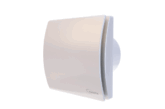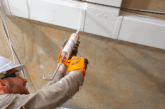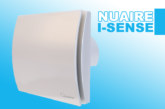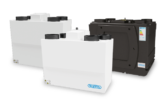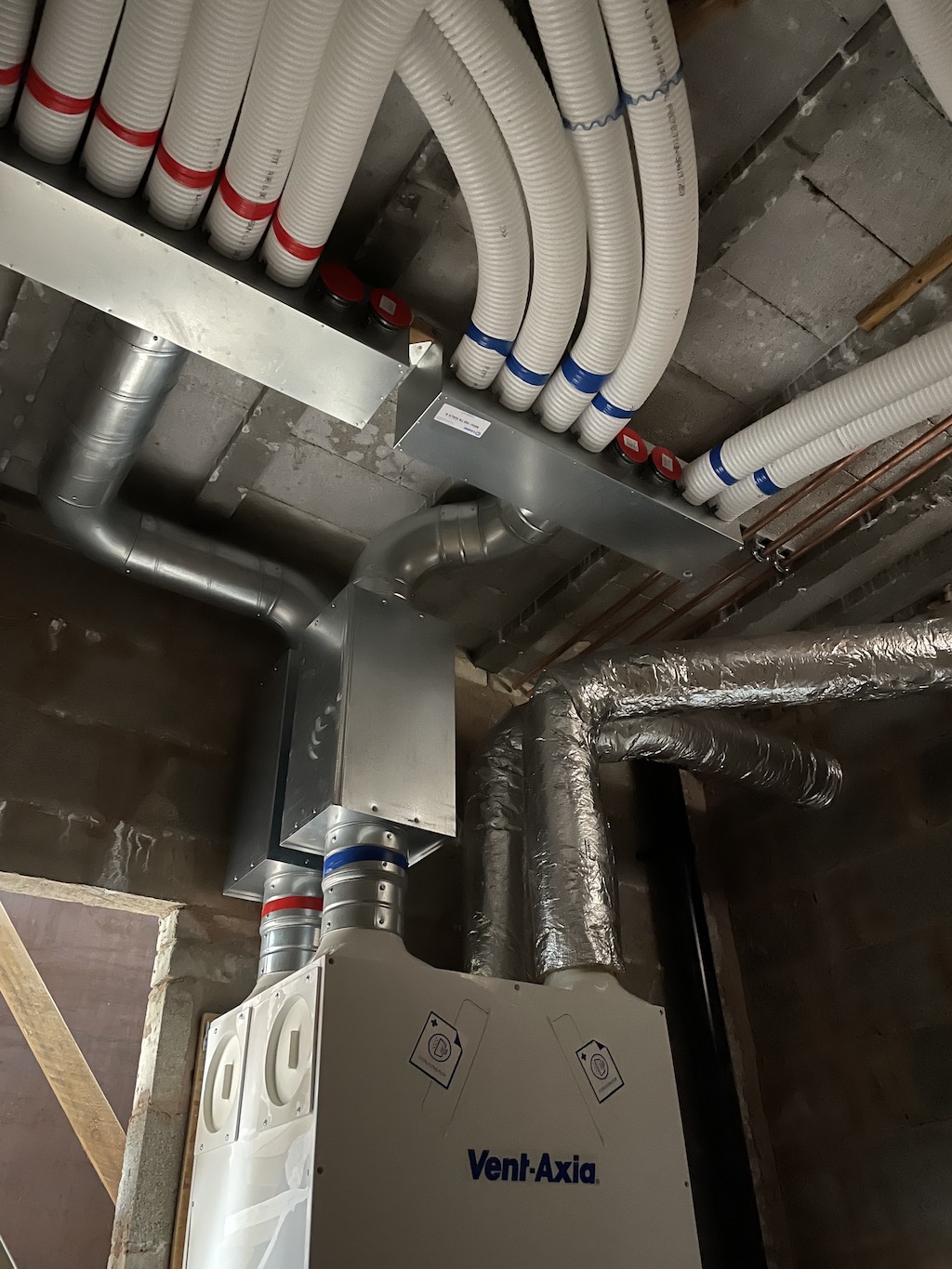
Ventilation specialists Vent-Axia has supplied a Lo-Carbon Sentinel Kinetic Plus Mechanical Ventilation with Heat Recovery (MVHR) unit to a 205m2 new-build 4-bed, 2-bathroom home in Sutton Coldfield, Birmingham.
Chosen to provide quiet, energy efficient and effective ventilation and heat recovery for the two-storey home, the Sentinel Kinetic Plus has been installed in a plant room on the ground floor of the home.
The new-build home is being built by a small developer and the MVHR unit was specified and installed by Mark Heat Recovery Systems. Having previously used the same system on another new build project, the company knew the Sentinel Kinetic Plus would provide good indoor air quality (IAQ) and energy efficiency with the added benefit of featuring built-in humidistats that would boost for the client once high levels of humidity were detected in the wet areas. Noise levels were important for the project, with the Sentinel Kinetic Plus running as low as 17.6 dB(A).
“The Vent-Axia Sentinel Kinetic Plus unit is a great compact unit that fits in with most self-builders’ and developers’ budgets”, commented Mark Wormington of Mark Heat Recovery Systems. “The unit offers simple controls and also built-in humidistats to avoid manually boosting the system. Overall, the Sentinel Kinetic range is one of the best MVHR units on the market.”
Humidity sensor
The Sentinel Kinetic MVHR unit has an integral humidity sensor for intelligent air quality control. The sensor increases speed in proportion to relative humidity levels, saving energy and reducing noise. It also reacts to small but rapid increases in humidity, even if the normal trigger threshold is not reached.
The night time relative humidity setback feature suppresses nuisance tripping as humidity gradually increases with falling temperature. A summer bypass provides passive cooling when conditions allow whilst a frost protection mode ensures maximum ventilation during the coldest periods.
The low carbon, energy saving, Sentinel Kinetic Plus MVHR is suited to larger homes and offers a whole house heat recovery system combining supply and extract ventilation in one unit. Warm, moist air is extracted from ‘wet’ rooms through ducting and passed through the heat exchanger before being exhausted outside and fresh incoming air is preheated via the integral heat exchanger.
The unit can extract from up to fourteen wet rooms and a communal kitchen while still achieving almost 90% heat recovery [in line with Product Characteristics Database (PCDB) data]. It has two fully adjustable speeds and a purge setting and its energy saving Vent-Axia DC motors further improves efficiency and carbon reductions.

